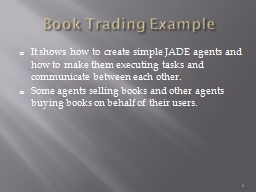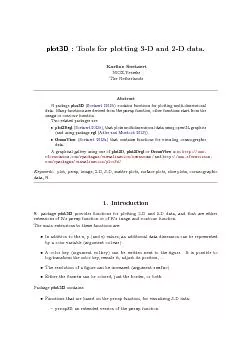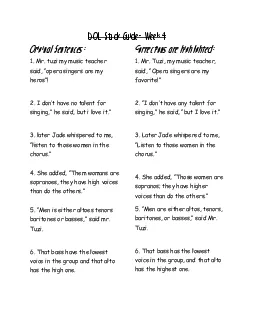PPT-Book Trading Example It shows how to create simple JADE agents and how to make them executing
Author : paige | Published Date : 2023-11-07
Some agents selling books and other agents buying books on behalf of their users 1 Buyer Agent Receives the title of the book to buy the target book as a command
Presentation Embed Code
Download Presentation
Download Presentation The PPT/PDF document "Book Trading Example It shows how to cre..." is the property of its rightful owner. Permission is granted to download and print the materials on this website for personal, non-commercial use only, and to display it on your personal computer provided you do not modify the materials and that you retain all copyright notices contained in the materials. By downloading content from our website, you accept the terms of this agreement.
Book Trading Example It shows how to create simple JADE agents and how to make them executing: Transcript
Download Rules Of Document
"Book Trading Example It shows how to create simple JADE agents and how to make them executing"The content belongs to its owner. You may download and print it for personal use, without modification, and keep all copyright notices. By downloading, you agree to these terms.
Related Documents














